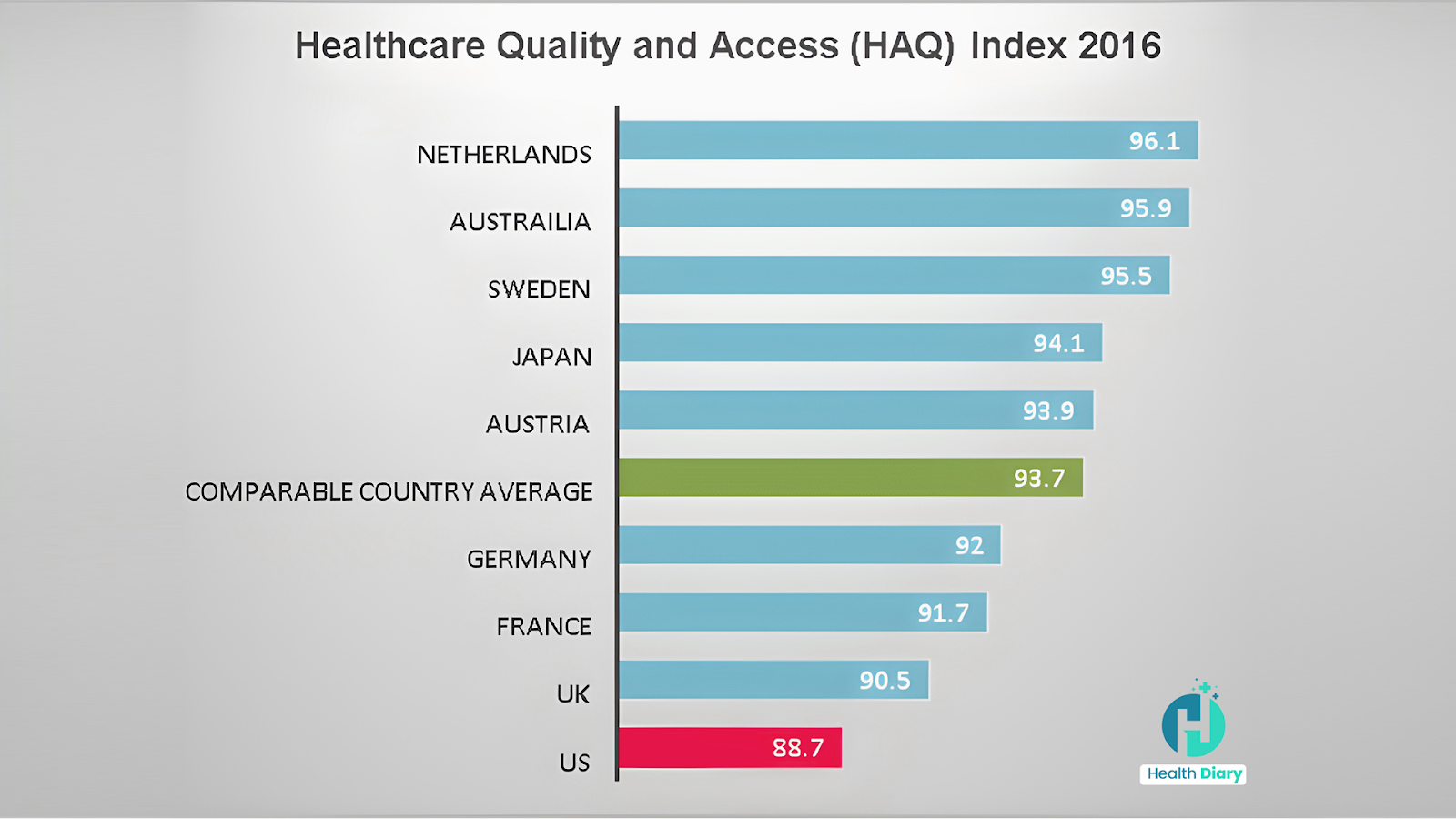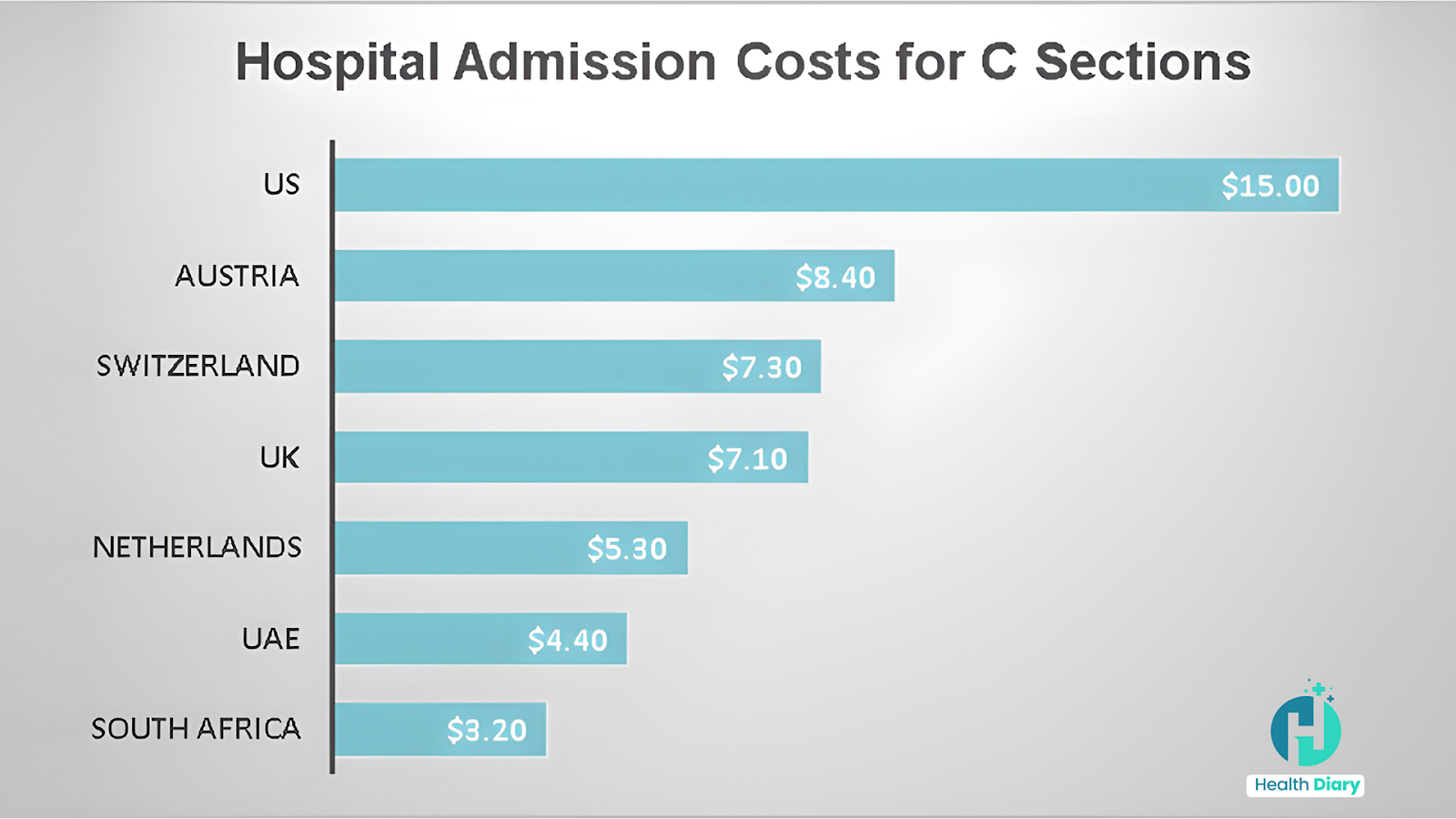In the last 10 years, the U.S. has taken initiatives to optimize the healthcare system and the patient experience. However, according to recent information published by Harris Poll, more than 70% of U.S. adults believe that healthcare systems are fulfilling their needs.
Moreover, the desire for change even goes beyond political boundaries as six out of ten individuals from multiple political affiliations agree with the fact that the healthcare system needs changes as a whole.
But the question here arises, what are the biggest flaws in the U.S. healthcare system? And how can we solve them?
8 Major Flaws in U.S. Healthcare System
Quality of Healthcare
Healthcare spending, especially per person and GDP, continues to be higher in the U.S. compared to other high-income countries.
In spite of this, the U.S. is still believed to have high standards of patient-centered care. But in terms of safe and coordinated care, the U.S. is deemed to have low healthcare quality.
Following are some of the quality concerns:
1. Medication Errors
Recent data highlighted the fact that in 8 years of the medical death rate list, more than 250,000 deaths are caused by medical errors. Therefore medical errors contribute 10% of all U.S. deaths and make it the third possible cause of death in America.
2. Bad Amenable Mortality Rates
The Healthcare Access and Quality (HAQ) index has listed America as the last among eight other comparable countries like Germany, France, and the UK. Amenable mortality calculates premature death that is curable and treatable efficiently in real-time.

Note: The HAQ index is a scale that begins from 0 (worst) and ends at 100 (best). A higher rating suggests fewer deaths as a result of a higher standard of care and access and vice versa.
3. Zero Transparency
It is estimated that nearly 60 billion dollars are lost every year due to fraud and abuse in the healthcare system. One root cause of this is upcoding which turns into rivalry between providers and insurance providers, with policyholders affected. Providers “upcode” a procedure to make more money from insurance companies.
However, insurance companies cost in the form of higher premiums to employers. As a result, patients get stuck in the middle due to higher costs and zero health outcomes.
4. Hard to find a Great Physician
Due to a lack of required information about doctor credentials and experience, patients can’t seek a reliable health professional. Due to this reason patients rely on misleading reviews about staff and wait times.
Apart from this, such platforms do not disclose significant information. For example, patient health conditions, information about the right doctors, and how to get a physician’s skill level in helping them with their health diseases.
Increasing Healthcare Expenditures
The U.S. stands at the top of the list of healthcare costs among comparable countries around the globe.
5. Rising Costs of Healthcare
According to an annual report published by the Health Cost Institute, total healthcare costs have been elevated annually, with rates that were 15% greater in 2018 compared to 2014.
However, in 2018, U.S. organizations and consumers invested 10% of GDP in the medical sector. And this figure has increased year by year. With the information provided by the centers for medicare services, it is expected that total national healthcare spending in the U.S. will rise at an average annual rate of 4.3%.
As spending has crossed $3.81 trillion in 2019, then that time is not far away when this amount will reach $6.19 trillion by 2028.
The International Federation of Health Plans (iFHP), revealed a report related to the global comparison of healthcare prices. Although, the reports simultaneously displayed the median cost of health services in 9 countries.
Moreover, the cataract surgery and drug Kalydeco costs more in the U.S. compared to New Zealand and the UAE. Below is an illustration of hospital admission costs or a C-section in the U.S., where $15,000 is charged for services.

Note: Data is extracted from the Health Care Cost Institute (HCCI). Every single value is in thousands of dollars, respectively.
Why is the Cost of the U.S. Healthcare System so High?
New Innovations
The demand for resources to guide and manage electronic health records (EHR) and electronic medical records (EMR) systems has risen. Why? Because of the cost of workflows and workers required to manage and operate the new systems.
6. Zero Insurance Coverage Options
Those Americans without health insurance become direct victims of health difficulties compared to the insured population. Reports identify that in America, the uninsured are vulnerable and may not receive healthcare due to more cost.
They may forgo preventative care, and possible health screenings, negatively impacting health. Compared to them, children also have less possibility to get quality care for curable diseases.
Limitations and Deficiencies
7. Shortage of Healthcare Workers
From the data published by the Association of American Medical Colleges (AAMC), the U.S. will observe a deficiency of between 54,100 and 139,000 primary and specialized care practitioners by 2033.
However, reports indicate that 2 out of 5 physicians will retire in the coming decade. Therefore the demand and supply ratio will expand further. The challenge of not having a required number of physicians to cover the nation’s population will threaten the healthcare system.
8. Inefficiencies
Curable healthcare errors and other inefficiencies cause deficiencies in quality care that put patient lives at risk. Plus, they also waste time and resources making the healthcare system inefficient.
Although doctors waste significant time updating EHRs and coordinating with insurance companies due to coverage restrictions. Hence, each plan differs in coverage options, which wastes money as well as resources.
How to Improve the Healthcare System in the U.S.?
Although we have highlighted eight different healthcare issues. Now it’s time to address possible solutions to improve the healthcare system in the U.S.
1. Lowering Cost & Increasing Transparency
Despite procedures aiming to minimize healthcare costs in the U.S., prices are still rising. Why? Because bringing them under control is a complex thing. If you want to reduce costs for patients, you also need to reduce profit margins for providers.
The best solution is to offer patients the necessary information to manage their health independently. This will decrease the demand for health services and so will the prices.
2. Cutting Costs & Increasing Productivity
A case study published by McKinsey reported that elective consumer service LASIK surgery showed more than half of the success rate in returning patients’ vision. After this, the cost of LASIK surgery declined gradually.
The study also reported that the price of elective surgeries had declined by 15% over the last decade. The reason for these valuable insights is to show that innovations reduce the process duration.
3. Optimizing Inefficiencies
Now the question arises how can we solve operational inefficiencies? The answer lies in the report by the Commonwealth Fund. According to the report, countries that depend on private health insurers do not encounter similar administrative inefficiencies.
However, these countries systematize insurance benefits programs to save time for medical healthcare workers and patients. Especially, when making copayments or coordinating care with insurance providers.
4. Enhancing Quality of Care
One of the most critical healthcare initiatives is enhancing the quality of care. There is a dire need for developing consensus protocols as they can optimize the quality and minimize costs in healthcare.
According to the latest research, errors in the healthcare system are not due to bad physicians. Instead, issues cause it, such as systemic issues, bad care coordination, and variations in physician care that lack responsibility.
Therefore the solution as stated before, lies in better education covering the relationship between a healthier lifestyle and preventable measures.
5. Finding a Qualified Physician
If you want quality medical care, then you need to explore a qualified physician with the required skills to treat your condition promptly. This way, you should waste time searching for reliable doctors until your condition becomes worse. Time is a valuable asset for patients with life-threatening diseases like cancer.
Enhancing patient experience means getting them linked with doctors and providers who are qualified to treat them. However, this is something that is not evident in a quick surfing via Google for online reviews.
Expertise is measured by metrics like physician’s research, number of patients checked in the past, expert status for a condition, or relationship with other professionals, etc. We know such information is not readily accessible to patients. That’s why we suggest Health Diary, where patient-physician communication is available with a few clicks.
Expectations for the Future
There is still a long way to go for the U.S. to make the healthcare system approachable in terms of reliability, efficiency, and price. We at Integrated IT Solutions, go hand in hand for this cause, to simplify things for both physicians and patients in their healthcare journey. We believe in making solutions and expect better outcomes for the future. Join us on this journey!




